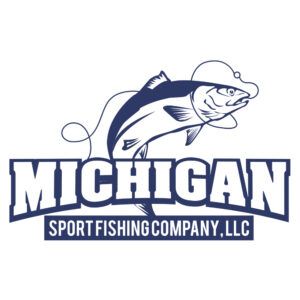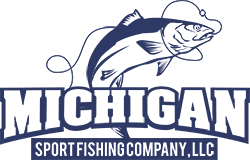
The steelhead trout (Oncorhynchus mykiss) is a migratory form of rainbow trout and is one of the most sought-after game fish in the Great Lakes region. Lake Michigan steelhead are stocked and supported by natural reproduction, providing anglers with year-round fishing opportunities in both the lake and its tributaries.
🎣 What Is a Steelhead?
- Species: Oncorhynchus mykiss
- Type: Anadromous rainbow trout
- Native Range: Pacific Ocean and rivers of western North America
- Introduced to the Great Lakes: Late 1800s
- Lifespan: 4–7 years
- Average Weight: 6–12 lbs; some exceed 15 lbs
Unlike resident rainbow trout, steelhead spend much of their lives in large bodies of water (like Lake Michigan) and return to rivers to spawn, much like salmon.
📈 Lake Michigan Steelhead: A Managed Fishery
- Steelhead were introduced into the Great Lakes in the 1870s.
- Stocking is managed by state agencies, including the Michigan Department of Natural Resources (DNR).
- Some Lake Michigan tributaries now support natural reproduction.
- Major strains stocked include Skamania, Michigan winter-run, and Arlee.
🗓️ Life Cycle & Spawning Behavior
- Spawning Season: Lake Michigan Steelhead spawn in late winter to early spring (Feb–April)
- Spawning Habitat: Gravel-bottom tributary streams with cool, fast-moving water
- Steelhead do not die after spawning like Pacific salmon; many return to the lake and may spawn multiple times
- Juveniles (smolts) spend 1–2 years in tributaries before migrating to Lake Michigan
🌎 Habitat in Lake Michigan
In the lake, steelhead:
- Stay near the surface during spring and fall
- Move offshore in summer, preferring cooler water temperatures (55–65°F)
- Feed on alewife, smelt, and aquatic insects
🎣 Fishing for Steelhead in Lake Michigan
Steelhead are popular among both recreational and charter anglers. Here’s how and where they’re most commonly caught:
 1. Trolling on Lake Michigan
1. Trolling on Lake Michigan
- Best in summer when steelhead are offshore
- Common lures: Spoons, plugs, and flashers with flies
- Techniques: Downriggers, lead core, and planer boards
2. River Fishing (Tributaries)
- Best in spring and fall
- Techniques: Float fishing, fly fishing, drift fishing
- Baits: Spawn sacs, beads, flies, jigs
Top tributaries include:
- Manistee River
- Pere Marquette River
- St. Joseph River
- Grand River
- Little Manistee River (used for egg collection by the DNR)
✅ Fun Facts About Steelhead
- Steelhead can jump over 10 feet out of the water
- They have exceptional eyesight and are sensitive to line and lure visibility
- Skamania steelhead (a summer-run strain) often run rivers in July and August
- Unlike many trout, steelhead thrive in both lake and river environments
🧭 Conservation & Management
- Michigan uses egg-take weirs like the one on the Little Manistee River to collect steelhead eggs for hatchery programs
- Creel limits and size restrictions vary by location (check with the Michigan DNR)
- Anglers are encouraged to practice catch and release, especially during spawning season
📚 References:
- Michigan Department of Natural Resources (DNR)
- U.S. Fish & Wildlife Service
- Great Lakes Fishery Commission
- Trout Unlimited

- Informational
- May 18, 2025







